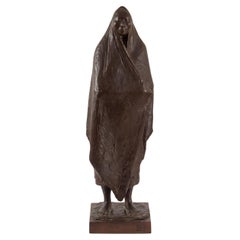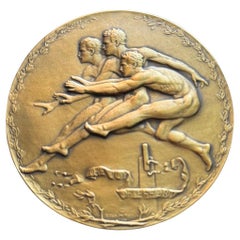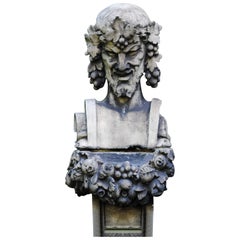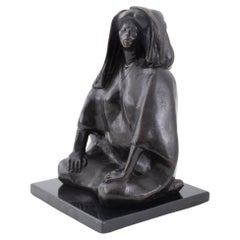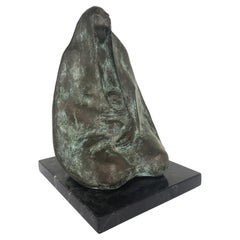Francisco Zúñiga Decorative Objects
Known as one of the most important Expressionist artists to emerge from Latin America, Francisco Zúñiga is remembered for his monumental sculptures, figurative paintings and prints, nude drawings and portraits of Central America’s rural indigenous women.
Born in San José, Costa Rica, in 1912, Zúñiga’s exposure to artistic sculpture began at the age of 13, when he worked with his father, Manuel Maria Zúñiga, carving religious figures for local churches. Spurred by a growing interest in art, Zúñiga attended San José’s School of Fine Arts, where he became influenced by classical, renaissance figurative art. After winning several local awards for his prodigious talent, Zúñiga left San José for Mexico City in 1936.
In Mexico City, he attended La Esmeralda, the painting and sculpture school of the National Institute of Fine Arts. There, Zúñiga studied under sculptor Oliverio Martinez and painter Manuel Rodriguez Lozano.
In 1938, Zúñiga joined the faculty at La Esmeralda, where he taught sculpture and painting until 1970. Meanwhile, during the early 1940s, Zúñiga’s works began to attract the attention of art critics in the United States as well as important collectors. In 1941, the Arts Club of Chicago included him as part of their “Thirteen Mexican Artists” group show. The following year, Alfred Barr, director of the Museum of Modern Art in New York, purchased one of his stone sculptures for MoMA’s permanent collection. Then, in 1943, New York’s Metropolitan Museum of Art acquired two of Zúñiga’s drawings.
Throughout most of his career, Zúñiga limited his subject matter to indigenous peasant women. However, he experimented with working with a variety of materials for his sculptures — bronze, alabaster, plaster, marble and modeling clay — and sought new media to create his art. (He made his first lithograph at age 60.)
Zúñiga won countless accolades in his lifetime. He won international awards for 35 of his public sculptures along with other works, and in 1992, he won Mexico’s highest cultural award, the Premio Nacional de Calidad.
Even after his death in 1998, Zúñiga’s legacy lives on. His sculptures, drawings, paintings and prints are found in museums around the world, including MoMA and the Met in New York, the Museum of Modern Art in Mexico City, the Fogg Museum at Harvard University, the Hirshhorn Museum and Sculpture Garden in Washington, D.C., the Middleheim Museum in Antwerp, Belgium and the Open-Air Museum in Hakone, Japan.
On 1stDibs, discover a range of Francisco Zúñiga prints, drawings and paintings.
Late 20th Century Francisco Zúñiga Decorative Objects
Bronze
1910s American Art Deco Vintage Francisco Zúñiga Decorative Objects
Bronze
Early 20th Century American Francisco Zúñiga Decorative Objects
Terracotta
1910s French Art Deco Vintage Francisco Zúñiga Decorative Objects
Blown Glass
Early 20th Century European Gothic Revival Francisco Zúñiga Decorative Objects
Marble, Bronze
1970s Italian Modern Vintage Francisco Zúñiga Decorative Objects
Porcelain, Wood
1910s Austrian Art Nouveau Vintage Francisco Zúñiga Decorative Objects
Ceramic
1990s Israeli Francisco Zúñiga Decorative Objects
Bronze
20th Century Japanese Mid-Century Modern Francisco Zúñiga Decorative Objects
Ceramic
Early 20th Century French Francisco Zúñiga Decorative Objects
Glass
Late 19th Century Meiji Antique Francisco Zúñiga Decorative Objects
Bronze
Late 20th Century European Francisco Zúñiga Decorative Objects
Bronze
21st Century and Contemporary German Organic Modern Francisco Zúñiga Decorative Objects
Wood
20th Century South American Francisco Zúñiga Decorative Objects
Marble, Bronze
Late 20th Century Mexican Francisco Zúñiga Decorative Objects
Marble, Bronze
1970s Mexican Vintage Francisco Zúñiga Decorative Objects
Bronze
Mid-20th Century Mexican Francisco Zúñiga Decorative Objects
Bronze
